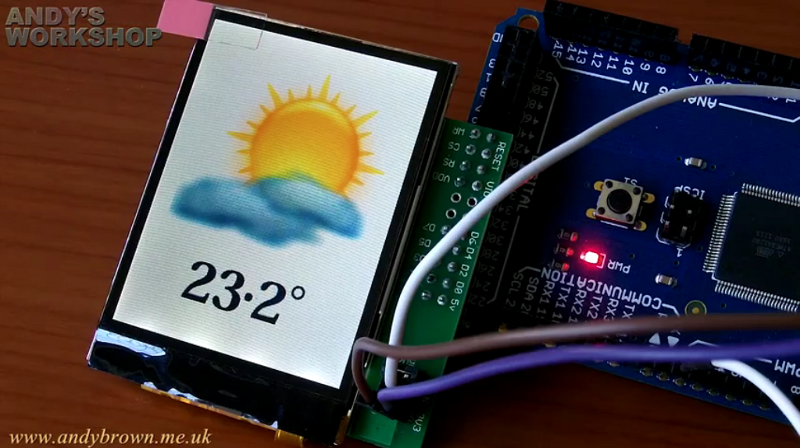[Andy] has been hard at work reverse-engineering the Nokia N82 2.4 inch cell phone display for use with an Arduino. As pointed out in the article, this same 2.4 inch display can be found in at least seven other Nokia products, so they are readily available. The panels can be found for as low as 3 pounds (or a little less than 5 dollars) on Ebay.
The results are quite good and can be seen in the videos after the break. The first demo displays a simulated weather report, and the second displays some JPEG images. Although an Arduino Mega was used in this demonstration, a standard Arduino can be used as well. Schematics as well as a bill of materials is included in the article, however if you’d rather just buy a board, he’s selling the rest of what he’s built on a first come first served basis. No word on how many he has in stock though!
[youtube http://www.youtube.com/watch?v=HtZ-iYut0dw&w=470&h=315%5D
[youtube http://www.youtube.com/watch?v=Y0Zuu6Df5mQ&w=470&h=315%5D















Awesome!
Semi repost but unless I am wrong, this is the fastest way to send data to a LCD. Doesn’t work on UNOs.
I still haven’t find a decent supplier in europe for this damn connector.
The ones I found charge a ridiculously high rate for shipping …*cough* cellnetos *cough*
I will have a few I’m happy to let go at cost. Feel free to PM me on the Hackday forums if you’re interested.
Lovely screen. Such a shame it’s not SPI though. I just don’t tend to use any parts equipped with that sort of parallel bus. Perhaps driving it with a shift register would be a good solution for lower cost AVRs and PICs.
320 * 240 * 2 * 8 bits = ~1.2Megabits for a whole frame. With hardware SPI on an Atmega you could reach 5-10 fps, but you would also need to load the data from somewhere.
Of course for static displays you don’t need high framerates, but these displays are not really aimed at hobbyists, originally they are for phones and mobile devices.
I can understand the 320*240 is the resolution and 8 bits is the # of bit planes..but what about the *2?
Is that considering double buffering?
A valid point. The fact the screen has a frame buffer and it supports windowed updates, hardware scrolling, etc. works to reduce the bandwidth required. I was thinking of using it for simple yet flashy annunciators and display of readings. (Way flashier than a HD44780 for example.)
If I wanted anything more (photos, movies..) – I would use a 32-bit micro which would likely have the parallel bus.
Many (most?) Series 40 Nokias do use SPI interface LCDs, just the inexpensive ones are less than 320×240. I expect the latest Nokia Ashas will have LVDS LCDs like the Symbian handsets which is totally hacker unfriendly.
I threw the factor 2 in there because I just assume that it accepts color information in RGB565 fromat which would be 2 Bytes per pixel.
Unless I am wrong, this doesn’t really use SPI. It seems to be faster because it dumps display data straight to the screen, which only a mega will support.
The mega supports XMEM but it *IS* possible to use this with a uno apparently.
http://andybrown.me.uk/wk/2012/07/28/interfacing-the-nokia-6300-qvga-tft-to-the-standard-arduino/
Wow, those are fantastic little screens.
Are you planning to build more boards? I would be interested in purchasing a handful.
Thanks
Mike
And on the subject of David Brooks, via a commenter at LGF, this is, um, weird. It appears that either Brooksie is trying to parody people who don’t like Romney, or he’s thrown in with MoDo against the Yes-We-Klan ticket. (Maybe Romney turned down his request to sit in his lap or something, and he’s pissed off.)
Now, there are tons of projects like this with screens for the Arduino but WE NEED MORE ADAPTATIONS OF THIS COMPATIBLE WITH THE RASPBERRY PI just trying to emphasize my point – it is needed.
Did who ever wrote the article even read the Andy’s description? That display is using 16bit interface trough the mega memory port interface. Now how can that be used on a “Standard Arduino”?